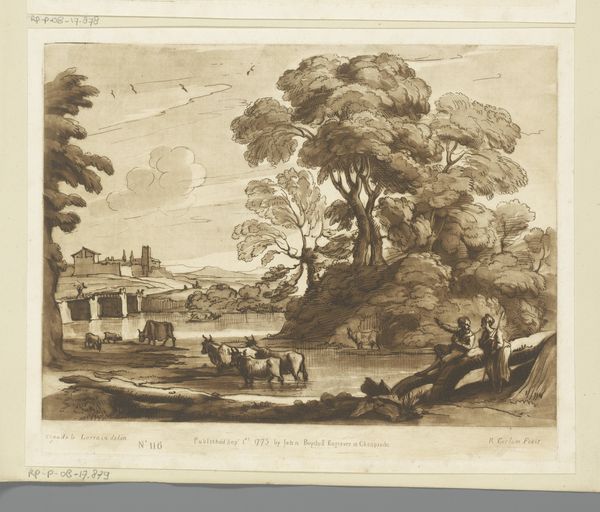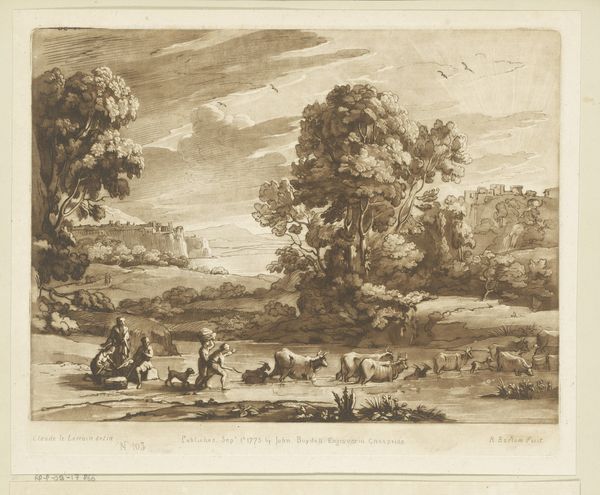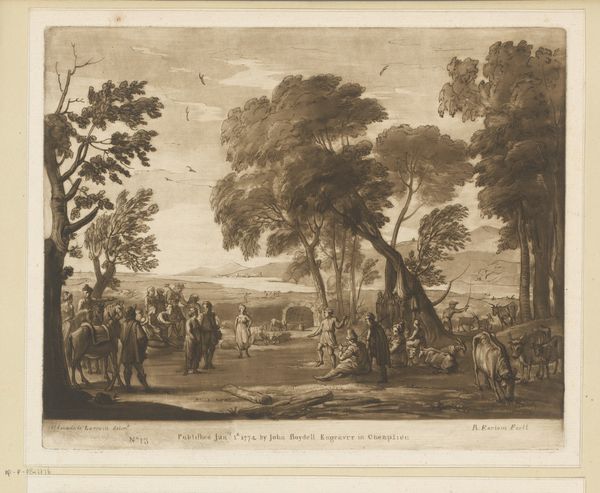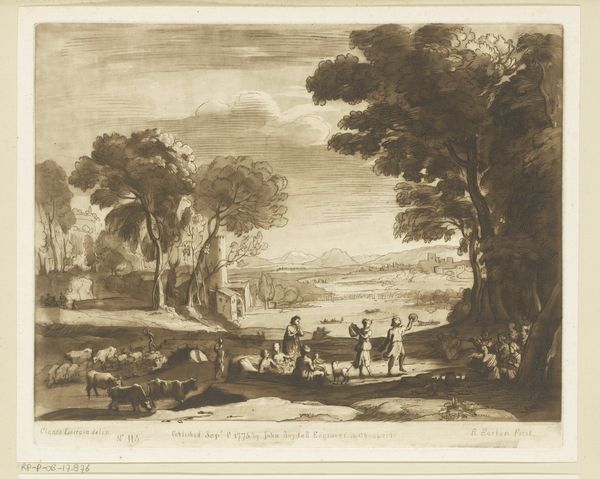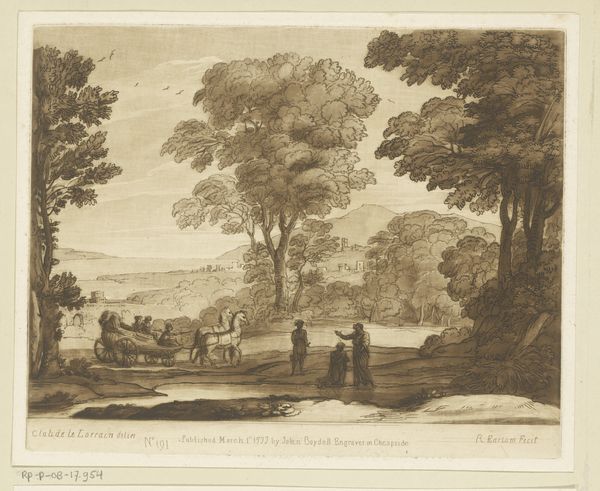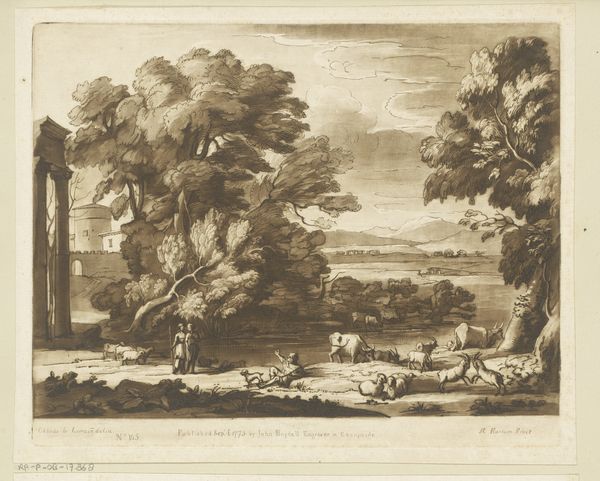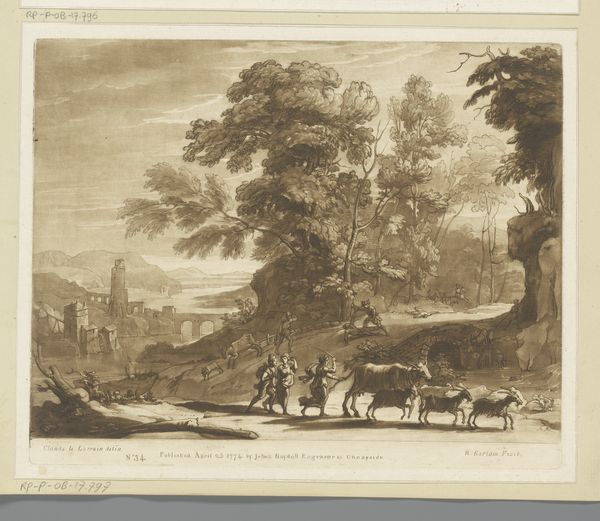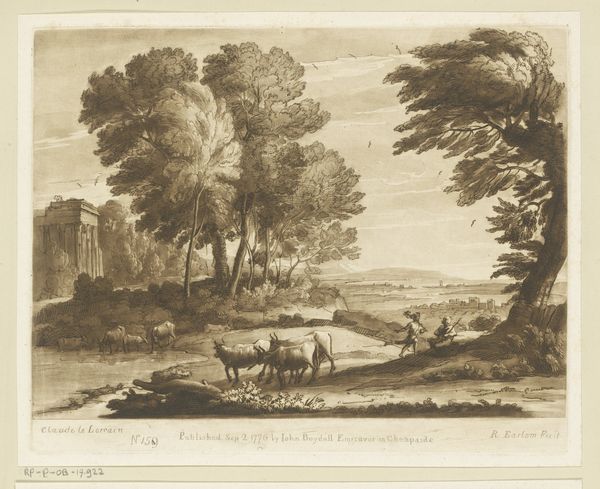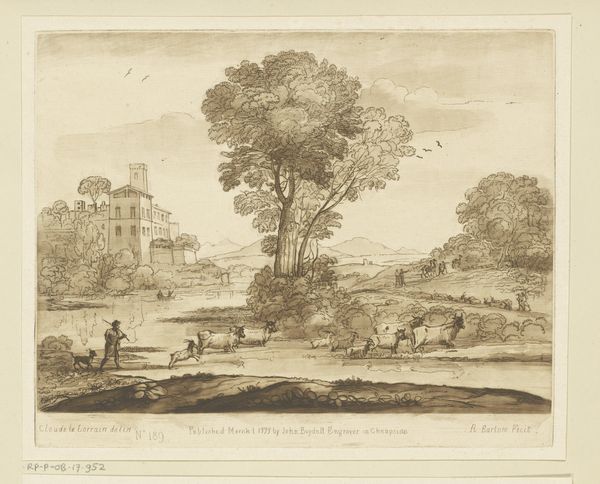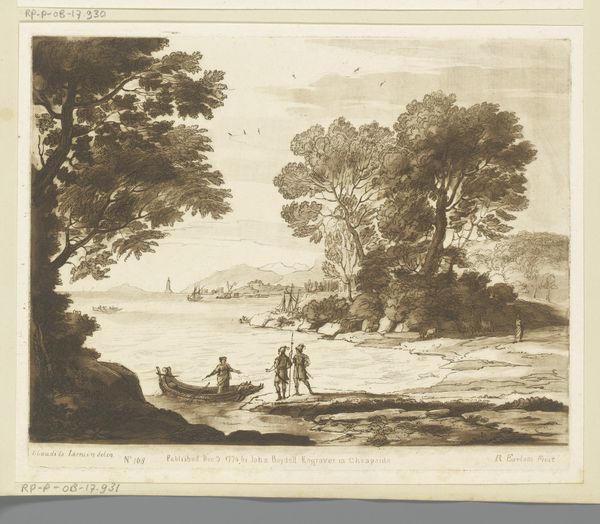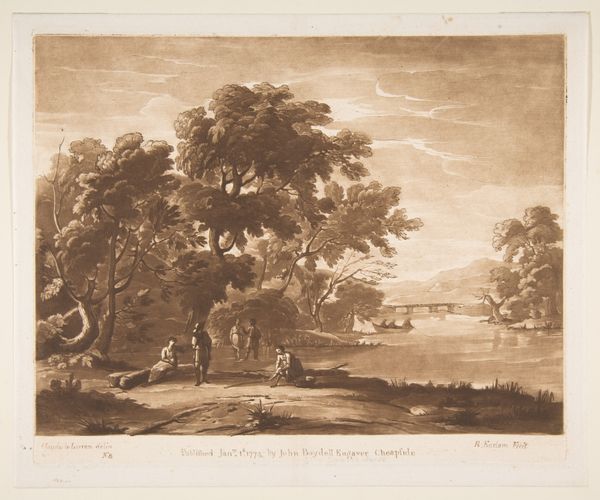
Landschap met stad op een heuvel en veedrijver die rivier oversteekt Possibly 1775 - 1779
0:00
0:00
richardearlom
Rijksmuseum
print, engraving
# print
#
landscape
#
classical-realism
#
history-painting
#
engraving
Dimensions: height 208 mm, width 256 mm
Copyright: Rijks Museum: Open Domain
Curator: We’re looking at "Landscape with a City on a Hill and Cattle Drover Crossing a River," an engraving potentially dating from 1775 to 1779. It's currently held at the Rijksmuseum and is after Claude Lorrain. Editor: It evokes a nostalgic tranquility, wouldn’t you say? A very studied scene. The tonal variations in the brown ink create a sort of gentle haziness. Curator: Yes, quite calculated. This print reflects the prevailing taste for idealized landscapes, inspired by classical ideals. Think of the picturesque movement, where compositions were carefully arranged to resemble classical paintings. Editor: I’m immediately drawn to the texture—or perhaps the simulation of texture. The engraver, likely Richard Earlom, using those delicate lines, transforms something rather rough—a working cattle drover and the animals themselves, struggling against the river's current—into an almost precious object. Curator: And that touches on something critical. These prints were circulated among the rising middle classes, bringing "high art" and scenes of pastoral life into the home. Consider it an early form of mass media, shaping perceptions of nature and history. Editor: The process of engraving itself interests me. The labor invested to reproduce the painting for consumption highlights the economics of image production. What were the working conditions? Was this piece of reproductive engraving esteemed art or a purely commercial exercise? Curator: It blurs those lines. While Earlom was reproducing Claude Lorrain’s vision, his skill in translating paint into line, capturing the subtleties of light and atmosphere, elevates the work beyond mere copy. His reputation certainly rested, at least in part, on such skill. Editor: I keep thinking about how the landscape serves to contain labor. The trees, water, and hillside, each requiring careful execution, frame our drover at work and the cattle pushing forward; it speaks of control over the natural and human elements that underpin social life. Curator: It's an interesting tension, this artificial presentation of nature. The idealized landscape actually camouflages labor. Editor: Reflecting on its materiality makes us conscious of art as crafted objects inseparable from social relations, class and economics. It's fascinating. Curator: It’s remarkable how this print reveals not just an artist’s skill but the dynamics of a whole era, and our conversation really exposes many social implications.
Comments
No comments
Be the first to comment and join the conversation on the ultimate creative platform.
